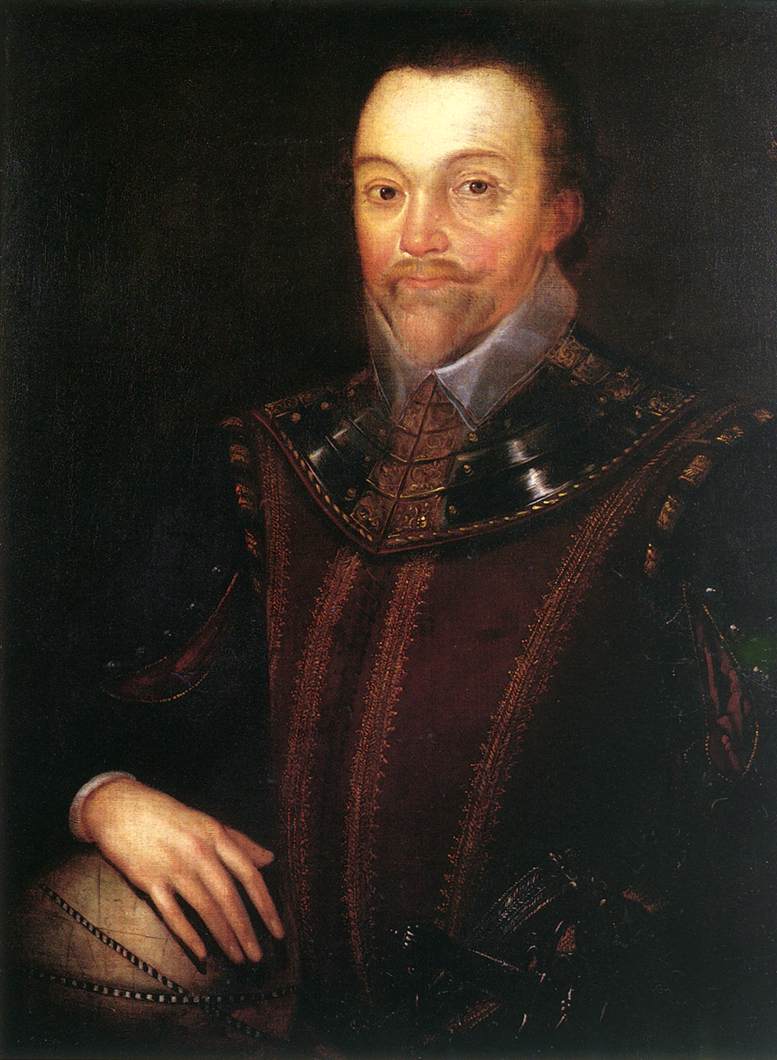The privateer Francis Drake had been a useful asset to the English Crown through his lifelong (however short) wrath against the Spanish. As was a young sailor, he was captured with his cousin Sir John Hawkins by the Spanish, only to escape and supposedly vow revenge. Sailing in the West Indies, Drake built a career in piracy, eventually falling in with the French buccaneer Le Testu. The two formed a raid on the Spanish Main, during which Le Testu would be captured and executed, but Drake and his men would escape laden with as much gold and silver as they could carry.
In 1577, Drake was given a mission by Queen Elizabeth to attack the Spanish along the Pacific coast. Magellan had crossed into the quieter waters of the Pacific for Spain some fifty years before, and conquests by Pizarro had spurred great wealth from the fallen Inca. While the treasure would have to sail through the screen of pirates past the Spanish Main, its transport in the Pacific was all but peaceful. Setting out of Plymouth on November 15, the expedition was immediately plagued with problems.
Foul weather forced them to Cornwall, and the fleet returned to Plymouth, setting out again that December. Many might have taken the bad start as a sign, but Drake was reputedly not a man of superstition (unless it worked into his favor). They added a sixth ship to their fleet that had been captured from the Portuguese, the first and nearly only good luck of the voyage. Upon crossing the Atlantic, Drake scuttled two of his ships due to the loss of manpower.
In what is today Argentina, Drake and his remaining men came to San Julian, the same bay where Ferdinand Magellan had executed mutinous men decades before. Their bleached bones still hung from gibbets, and Drake took advice Magellan's legacy. He executed a mutinous commander, Thomas Doughty, a former friend who had been with Drake since their participation in fending off Scottish ships during the Rathlin Island massacre in Ireland. Doughty had caught Drake's brother stealing, and Drake had turned against him since. Without producing a writ from the Crown to prove his powers or giving Doughty a trial, Drake pronounced him guilty of mutiny, treason, and witchcraft, having him beheaded.
Further bad luck followed as the captured Portuguese ship Mary was found to be rotted, and two more ships were lost passing through the Strait of Magellan. Drake's remaining men on the one last ship, Golden Hind, waned in morale (believing that God was punishing them because of what had been done to Thomas Doughty) until they began to attack Spanish towns and capture ships. They were seemingly invincible until Drake gave chase to the treasure ship Nuestra Señora de la Concepción, which turned out to be a Spanish trap. The English privateers were captured, and many, including Drake, were killed in the fighting. A few survived as prisoners of war or joined the Spanish as sailors, and enough trickled back to England to tell the tale of the failed Drake expedition.
While Spain and England continued to prey upon one another at sea, they would never fully go to war. Much of the infantry battles would be fought vicariously in the Netherlands, and war would rarely be formally declared upon the high seas. Spain grew in is colonies to the south, and England began to establish its own colonial plantations in the north, rarely making profit until the implement of tobacco. Spain maintained the upper hand in what became a war of attrition between Protestant and Catholic kingdoms in Europe. The colonies grew, but gradual setbacks in Atlantic trade rights kept England on par with the colonial aspirations in North America of the Dutch and Swedes. By the time the American colonial period waned through the Liberty Rebellions of Europe, North America was a hodgepodge of countries of varying nationalities and dependencies upon their mother countries.
–
In reality, Drake's capture of the ship nicknamed Cagafuego was a great success, taking some 26 tons of silver, 80 pounds of gold, a golden crucifix, jewels, and chests of valuables. Drake would sail as far north as California (claimed as New Albion) and circumnavigate the Earth, arriving in Plymouth on September 26, 1580. He would be knighted, enter politics, and return to the seas in raiding the city of Cadiz on the Spanish mainland. Such audacity of war would spawn King Phillip II of Spain to launch the Spanish Armada aimed at transporting troops to an invasion of England. Drake would be instrumental in the English defeat of the Armada, signaling the end of Spanish dominance upon the high seas.

No comments:
Post a Comment